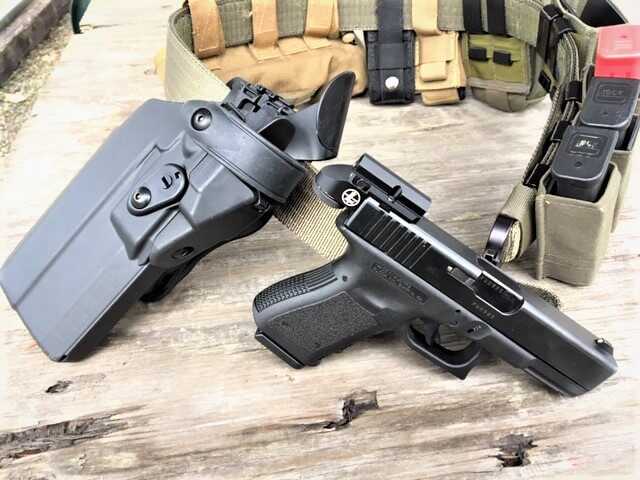
Micro red dot sights on pistols have gone from gamer range toy to mainstream everyday carry. The technology is continually improving, and the costs keep dropping. Many traditional shooters are considering whether a red dot might make sense for their everyday carry pistol.
“It takes too long to find the dot.” That is the most common complaint of shooters attempting to get used to a red dot on a pistol. The small diameter (9mm) of the Leupold DeltaPoint Micro (DPM) tube is a ghost ring sight with the front sight post in the middle.
DPM sits at the same height as factory iron sights. There is a large traditional rear sight with a recessed dot on each side post and can be lined up with a front sight dot in the normal, 3-dot sight fashion.
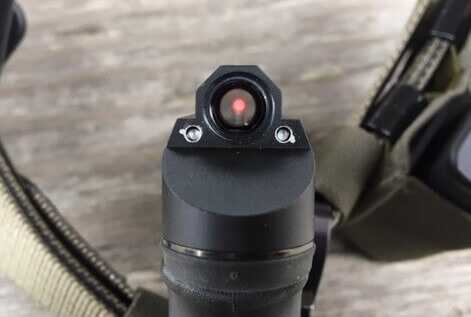
The big advantage of red dot sights is target focus. In any light conditions, you get a glowing red dot superimposed on the target. Under stress, shooters may find it difficult to shift focus from the target to the front sight. Shooters with vision problems may not be able to focus on the front sight at all.
If you are an experienced iron sight shooter, you are probably not excited about putting in the hours of practice and the cost of a new red dot sight, slide, suppressor height backup sights, and holster. Leupold’s DeltaPoint Micro sight is the perfect dot to transition iron sight-trained shooters. Mounted directly to the rear sight dovetail in your Glock or M&P, the DeltaPoint Micro works like a ghost ring sight.
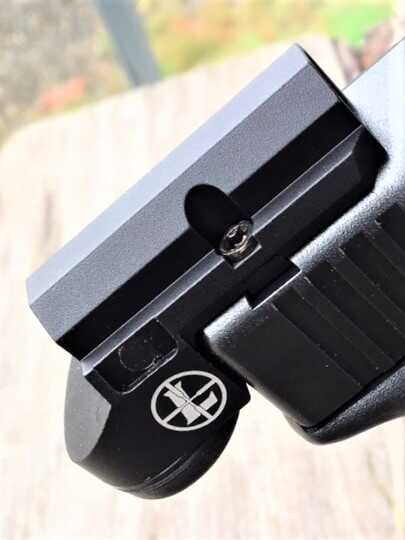
What’s the Big Deal?
DeltaPoint Micro is a fully enclosed, low-profile red dot sight. Designed specifically for low-profile concealed carry. It provides the advantages of a miniature red dot while the low height to bore maintains the iron-sight sight plane for an intuitive sight picture. It is a Leupold with all the quality and rugged performance that Leupold consumers expect.
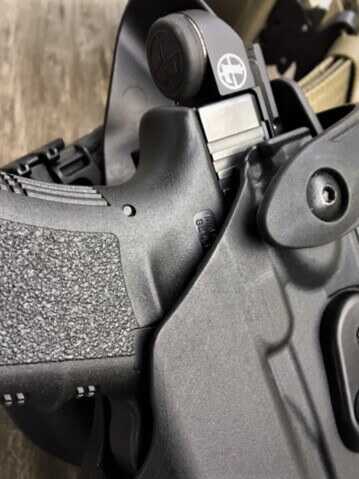
What if the Battery Dies or the Dot Fails?
If you can’t see the dot because the battery dies or your dot fails, looking through the DeltaPoint Micro’s tube forms a ghost ring sight right in front of our eye. There is no need for suppressor height sights. DPM mounts on the factory rear sight dovetail an unmodified slide aligning with the height of a factory-height front sight. An added benefit is that if you like your holster, you can keep your holster, it fits in almost any holster making the Micro a simple upgrade for Glock and S&W.
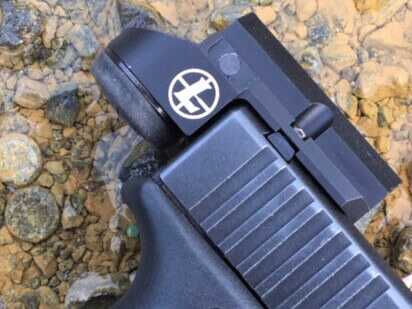
The Set Up
I got a Glock 23 (Gen3) police return gun a while back. It has no modifications or upgrades (OEM sights) so it has lived in the darkest corner of my safe since I started teaching with Red Dots three years ago. This was the perfect candidate for a one-step techno make-over.
Why .40 caliber? It was a police gun; it was pretty cheap and I have been able to find a little .40 ammunition, so Glock 23 for the win.
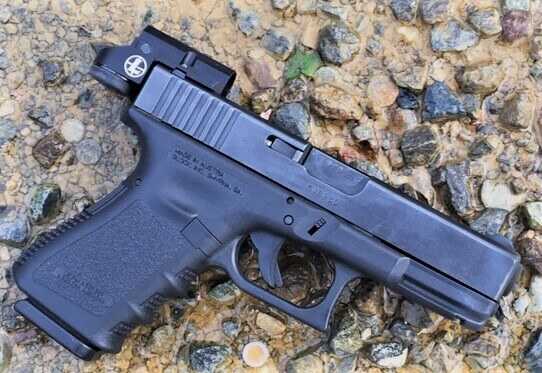
Zeroing
Leupold recommends initially centering the dot in the rear aperture and aligning it with the top of the front sight. That should put you very close to zero without firing a shot. The elevation screw moves the point of impact 18 minutes of angle (MOA) per revolution, and the windage screw moves POI 36 MOA per revolution. That equates to about 2 inches and 4 inches of adjustment per full revolution at 15 yards, respectively. This put me on the target at 15 yards where I zero.

The sight adjusts an Allen key which is provided. There are no clicks but this isn’t as big a deal as I thought. You can insert the key and use the tail to turn in 1/4 revolution increments for fine adjustments.
At The Range
The DeltaPoint Micro points just like your iron sights making it point fast and sight intuitively. DPM displays the accuracy you expect from Leupold. It comes out of the holster with no hassles. Reloads and malfunction clearance are no different than usual.
I was centered up at 15 yards in one adjustment. I like a 15 shot zero because I can see the holes as I shoot and it is good out to 100 yards.
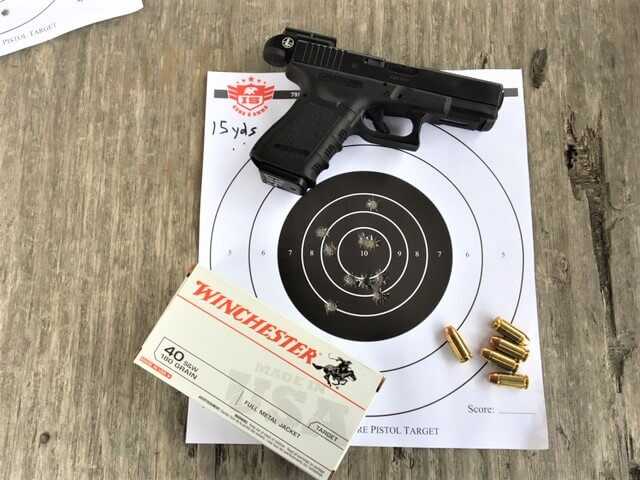
After some multiple target drills, I moved the target to 25 yards. While this is not exactly a sniper group, it was standing unsupported and represents acceptable accuracy with all A-zone hits. 15-yard zero working fine.
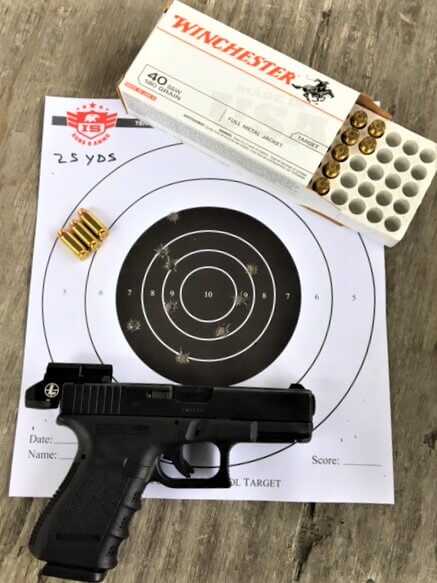
Back to steel at 50 yards, also unsupported. All hits except a couple of close misses that were all me (overconfidence from initial rapid hits and not paying enough attention to the trigger). With a 15 yard zero and a little support, this is a simple shot.
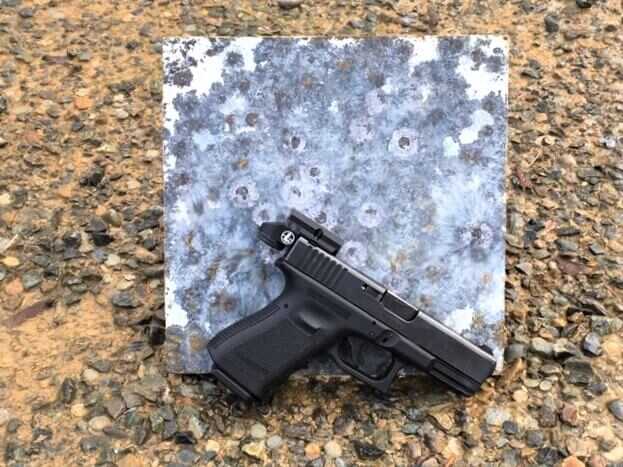
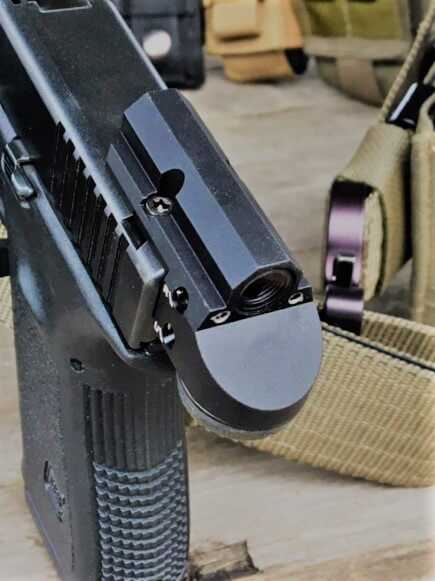
The flat front and enclosed design make it possible to rack the sight against a barricade with one hand if the situation requires it. The DeltaPoint Micro is waterproof, fog-proof, and backed by the company’s lifetime warranty.
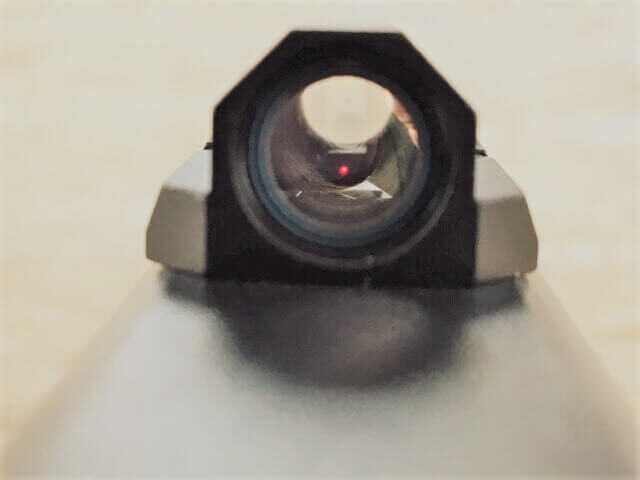
Optics
The view through the glass is clean and crisp with no color shift. The red dot is a bright color that really grabs your attention. This fully enclosed optic is fog proof and waterproof. The DPM is IPX7 rated, it can be submerged for 30 minutes up to a meter and still function. It is rugged enough to rack off barricades or hammer nails. The lenses are covered in DiamondCoat II, a scratch-resistant treatment that makes the lens surfaces tough too.
Battery
The battery is mounted on the rear of the sight. The Glock models have a near 90-degree square back, while Smith & Wesson’s backplate is angled. The battery compartment is covered within a rubber cap. The cap is also the illumination control button.
To take the slide off, you will have to unscrew the rubber battery cap and remove it, but the optic stays zeroed on the slide. If you want to take the parts out of the slide, you will need to remove the DPM.
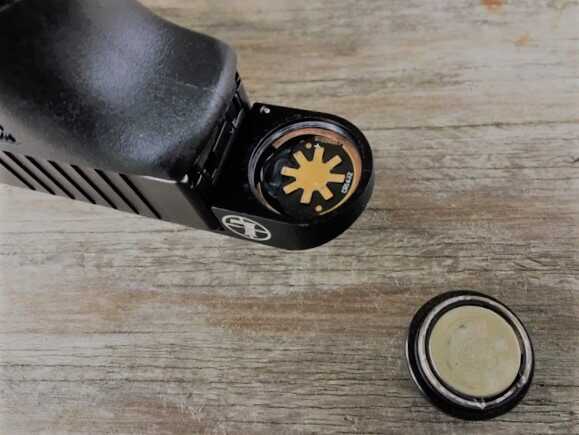
There are eight different brightness settings. You can toggle through these settings by pressing the rubber button under the sight. To indicate a low battery, the dot will drop one level in intensity when the battery is drained. When the battery has only a few days of life left, the reticle will flash 10 times when powered on.
The DeltaPoint Micro can run for up to 3½ years at a medium setting from the single CR1632 battery. It has an internal motion sensor that automatically turns off power to the unit after 5 minutes of idle time. Any movement turns the optic on. Clearly, for carry use it should remain on and at the ready.
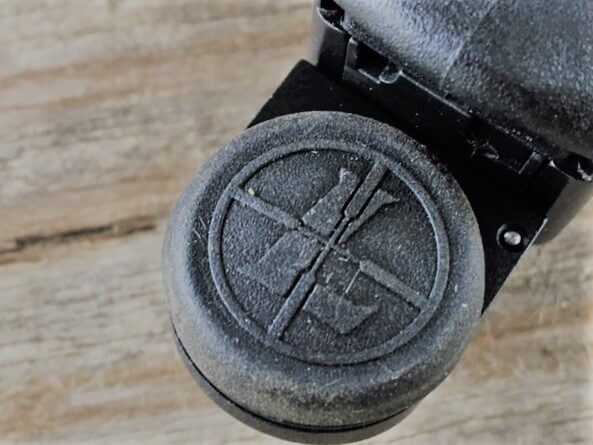
Leupold DeltaPoint Micro Specifications:
- Type: Fully enclosed LED Emitter
- Mounting Interface: Dovetail insert
- Body Material: 6061 aluminum
- Reticle: 3 MOA red dot
- Brightness: 8 Settings (Night Vision Compatible)
- Battery: One CR1632
- Weight: 1.1 oz.
- Dimensions (LxWxH): 2.25 in. x .9 in. x 1.25 in.
- Warranty: Lifetime
- MSRP: $399.99
- Compatibility: GLOCK and S&W M&P (Picatinny rail version under development)
- Battery Life: 3.5 years at medium brightness
- Range of Adjustment: 100 MOA elevation, 180 MOA windage
Current models fit Glock® and Smith & Wesson® M&P® semiautomatic handguns only. (Does not fit Glock MOS)
Why Should I Buy a DeltaPoint Micro?
When my buddies who shoot red dots look at the DPM, they say “I hate it” when they shoot it they say “Wow, this is a great upgrade for iron sighs.” When my iron sight pals look at it, they say “I won’t be able to see the dot.” When they shoot it they say, “Does Leupold have those in stock?’ (Spoiler Alert: they are in stock). If you are a dot-curious iron sight shooter who is having difficulty focusing on the front sight, or just want to try a red dot without milling a slide and buying new holsters, the Leupold DeltaPoint Micro is the way to go.
There is no red dot on the market that has the DPM’s low profile and ease of transition from iron sights. Ideal for concealed carry and personal defense, it is a direct replacement for the rear factory rear sight. Built Leupold tough, this fully enclosed system provides protection from the elements under the harshest conditions, while adjustable illumination settings make the DeltaPoint Micro extremely accurate in any conditions. Best of all, is a Leupold; designed, machined, and assembled in America. Guaranteed for life.


I am a full blown RDS convert, but that being said, I couldn’t run this thing. It’s ugly to boot and the window is too small! There’s a sweet spot on glass size for these mini sights and I believe that one goes too far to the small side. The Romeo Zero is about the minimum I can deal with.
Hmmmm, lets see. $400 for this device vs $40 for a set of Fiber Optic sights. On a $350 semi-auto. No batteries to fail, impervious to water………
That being said, I am interested in seeing the movement towards smaller red dots like this. I hope the trend continues. A smaller battery compartment would have my attention as well. I have used FO sights for ages and they just work for me. I have shot a lot of guns with RDS at the range where I work/teach new and experienced shooters. I’m still faster and shoot better with Fiber optics. I have tried to like the RDS, they just don’t offer ME anything better. YMMV.
You don’t understand red dot sights. Don’t feel bad, it is a common problem. The red dot shifts focus to the target. It does require some practice before a new red dot shooter sees the benefits. Your fiber optics still require focus on three different planes, front sight, rear sight and target. Fine for the range, slow on the street. As far as reliability, I have broken more fiber optic sights than red dots.
I agree with brother Nade- make them adaptable to a 1911A1 and Ill buy it. I think “low profile” will be the next rage in sights. No I will not buy any of the current crop of striker fired guns, which I hate. There – I dont care if the “experts” get their thongs in a twist.
Wouldnt be possible to work on anything but a striker fire. You might be out of luck.
Too bad it is only limited to Glock and M&P. If they don’t come up with more, it will never become popular.